

CORNPLANTER WHITE PETER
SENECA CHIEF ONEIDA CHIEF
Dee Finney's blog
start date july 20, 2011
today's date April 1, 2014
page 661
TOPIC: SENECA
THIS TOPIC CAME RIGHT OUT OF LEFT FIELD. I HADN'T BEEN THINKING ABOUT INDIANS AT ALL TODAY.
BUT I HAD JUST HEARD A CHANNELED MESSAGE FROM MALCOLM BELL IN AUSTRALIA FROM HIS SPIRIT GUIDE ARANUTH, WHO GAVE A MESSAGE ABOUT FINISHING ONE'S LIFE MISSION AND DO IT WITH LOVE.
Here is the Youtube video of Aranuths recent message
channelled at
Ravenshoe on Friday the 28th of March.
http://www.youtube.com/watch?v=IN5gTsDsJrU
DEES DREAM AND VISIONS
APRIL, 2014
4-1-14 - DREAM - I was downtown somewhere downtown near where I live . I was at an cross intersection near where my kids were playing in the street.
I told the kids they had to be home in 15 minutes because it was starting to get dark out.
While I was standing on the corner of the street, Greg, our ex- landlord was driving by and whipped around the corner really fast and his car hit my hand right on the thumb.
He got all upset and went to get his lawyer to make sure I didn't sue him for neglect for hitting me, but my thumb only hurt for a minute and then stopped. It wasn't even bruised.
I continued on home and walked through a mall area where a lot of people were sitting around tables at some kind of auction or lecture or something.
Greg's sister just happened to be sitting in the same aisle that I was walking through, and some of her family was also there.
She recogniZed me and jumped up and hollered over at her family nearby and said loudly so everyone could hear, "Do you know what Greg did? He hit Dee with his car, and then do you know what my other brother did? He went through the stuff the Dee and Joe were throwing out while they were moving and he stole a painting of Seneca from their house."
She was so upset about those two things, she couldn't hardly stand it, and she kept walking way really fast, before I could explain that I was okay and wasn't upset.
But I really wanted to know about the painting of Seneca. I didn't even remember having it.
Here are the web pages I did about Seneca.
www.greatdreams.com/cornplanter.htm
Mar 29, 2002 ... During the American Revolution, the Iroquois warrior Cornplanter rose to prominence, becoming a principal Seneca leader. He was also ...
Approximately 28 of 30 Seneca towns had been destroyed within a five year period. (Ibid) Thomas Jefferson... In 1807, Thomas Jefferson instructed his War ...
www.greatdreams.com/wisdom.htm -
CORNPLANTER - SENECA CHIEF. (Tashunka Witco, Tashunca-Uitco, "his horse is crazy"). These are the words of a great Indian hero. Crazy Horse was born in ...
www.greatdreams.com/nativeb.htm -
Ramapough Rankokus Raramuri River Yuman Sac Fox Sahnish Salish Samish Santo Domingo Saponi Saskatchewan Sauk/Fox Secwepemc Seminole Seneca
www.greatdreams.com/concentration-camp-locations.htm
Seneca Women's Encampment for a Future of Peace and Justice was established. Groups of demonstrators staged civil disobedience protests, climbing the ...
www.greatdreams.com/Populations_Native.htm
Cayuga, 1,048, 0.1. Iroquois, 4,327, 0.2. Mohawk, 15,490, 0.8. Oneida, 11,564, 0.6. Onondaga 2/, 1,500, 0.1. Seneca, 9,167, 0.5. Seneca-Cayuga, 1,052, 0.1.
www.greatdreams.com/tribes.htm
Seneca Nation of New York Seneca-Cayuga Tribe of Oklahoma Shakopee Mdewakanton Sioux Community of Minnesota (Prior Lake) Sheep Ranch Rancheria ...
www.greatdreams.com/political/political_dreams.htm
4-5-2002 - CORNPLANTER - SENECA PEACE MAKER MODERN NATIVE AMERICAN POLICY. BIOLOGICAL WARFARE A PROPHECY. 3-16-2002 - THE ...
www.greatdreams.com/blkwht.htm
The road to women's suffrage, which began at the Seneca Falls Convention in New York in 1848, was a much longer trek. Believing that “it was the duty of the ...
www.greatdreams.com/henry/carl-curry.htm
Survivors include children, Francis “Pete” Sanders, Seneca, Linda “Kathy” Curry Sonis, Neosho, Mo., and Sally Tidwell, Racine, Mo.; stepdaughter, Carla Jones, .
***********************
The Seneca are a group of indigenous people native to North America. They were the nation located farthest to the west within the Six Nations or Iroquois League in New York before theAmerican Revolution. While exact population figures are unknown, approximately 15,000 to 25,000 Seneca live in Canada, near Brantford, Ontario, at the Six Nations of the Grand River First Nation. They are descendants of Seneca who resettled there, as they had been allies of the British during the American Revolution. Nearly 30,000 Seneca live in the United States, on and off reservationsaround Buffalo, New York and in Oklahoma.
The Seneca are a group of indigenous people native to North America. They were the nation located farthest to the west within the Six Nations or Iroquois League in New York before theAmerican Revolution. While exact population figures are unknown, approximately 15,000 to 25,000 Seneca live in Canada, near Brantford, Ontario, at the Six Nations of the Grand River First Nation. They are descendants of Seneca who resettled there, as they had been allies of the British during the American Revolution. Nearly 30,000 Seneca live in the United States, on and off reservationsaround Buffalo, New York and in Oklahoma.
| Total population | |
|---|---|
| 56,222 current | |
| Regions with significant populations | |
| Cattaragus Reservation | 2,412 (2000 census) |
| Tonawanda Reservation | 543 |
| Allegany Reservation | 1,099 |
| Languages | |
| Onan'dowa'ga, English, Other Iroquoian Dialects | |
| Religion | |
| Longhouse, Handsome Lake, Kai'hwi'io, Kanoh'hon'io,Kahni'kwi'io, other Christian denominations | |
| Related ethnic groups | |
| Onondaga Nation, Oneida Nation, Tuscarora Nation,Mohawk Nation, Cayuga Nation, other Iroquoian peoples, Wyandot (Huron) Nation, Neutral Nation, Erie Nation, Lenape Nation, Shawnee Nation, Mingo Nation | |
The Seneca nation's own name (autonym) is Onöndowága, meaning "Great Hill Place." It is identical to the endonym used by the Onondaga people. With the formation of the Haudenosaunee, they settled and lived as the farthest west of all the nations within the league. They were referred to as the keepers of the Western Door. Other nations called them Seneca after their principal village of Osininka. Since "Osininka" sounds like the Anishinaabe word Asinikaa(n), meaning "Those at the Place Full of Stones", this gave rise to further confusion. Non-Haudenosaunee nations confused the Seneca nation's name with that of the Oneida nation's endonym Onyota'a:ka, meaning "People of the Standing Stone." In short, "Oas-in-in Ka" (Seneca) means "Stone Place."
The similarity to the name of the Roman statesman Seneca is entirely coincidental.
The Seneca traditionally lived in what is now New York between the Genesee River and Canandaigua Lake. The dating of an oral tradition mentioning a solar eclipse yields 1142AD as the year for the Seneca joining the Iroquois (Haudenosaunee). Some recent archaeological evidence indicates their territory eventually extended to the Allegheny River in present-day northwestern Pennsylvania, particularly after the Iroquois destroyed both theWenrohronon and Erie nations, who were native to the area. The Seneca were by far the most populous of the Haudenosaunee Nations, numbering "about four thousand souls" by the seventeenth century.
Seneca villages were located as far east as current-day Schuyler County, south into current Tioga and Chemung counties, north and east intoTompkins and Cayuga counties, and west into the Genesee River valley. The villages were the homes and headquarters of the Seneca. While the Seneca maintained substantial permanent settlements and raised agricultural crops in the vicinity of their villages, they also hunted widely through extensive areas. They prosecuted far-reaching military campaigns. The villages, where hunting and military campaigns were planned and executed, indicate clear aboriginal presence and hegemony in these areas.
The Seneca had two branches; the western and the eastern. Each branch distinct, they were individually incorporated and recognized by the Iroquois Confederacy Council. The western Seneca lived predominately in and around the Genesee River, gradually moving west and southwest along the Erie and Niagara rivers, then south along the Allegheny River into Pennsylvania. The eastern Seneca lived predominantly south of Seneca Lake in and around current-day Corning. They moved south and east into Pennsylvania and the western Catskill area.
The west and north were under constant attack from their powerful Iroquoian brethren, the Huron. To the South, the Iroquoian-speaking tribes of the Andaste (Conestoga and Susquehannock) threatened constant warfare. The Algonkian tribes of the Mohicans blocked access to theHudson River in the east and northeast. In the southeast, the Algonkian tribes of the Delaware (Delaware, Minnisink and Esopus) threatened war from eastern Pennsylvania, New Jersey and the Lower Hudson.
The Seneca used the Genesee and Allegheny rivers, as well as the Great Indian War and Trading Path (the Seneca Trail), to travel from southern Lake Ontario into Pennsylvania and Ohio (Merrill, Arch. Land of the Senecas; Empire State Books, 1949, p 18-25). The eastern Seneca had territory just north of the intersection of the Chemung, Susquehanna, Tioga and Delaware rivers, which converged in Tioga. The rivers provided passage deep into all parts of eastern and western Pennsylvania, as well as east and northeast into the Delaware Water Gap and the western Catskills. Even though they had different branches they all wore the same headdress. Like the other Haudensaunees, they wore hats (basically) with dried cornhusks on top. The Senecas had one feather sticking up straight. (Map 4 -Folts, James D. “The Westward Migration of the Munsee Indians in the Eighteenth Century", The Challenge: An Algonquian Peoples Seminar. Albany: New York State Bulletin No. 506, 2005. Pp 32)
Traditionally, the Seneca Nation's economy was based on hunting and gathering activities, fishing and the cultivation of corn, beans, and squash. These vegetables were the staple of the Haudenosaunee diet and were called "the three sisters". Seneca women generally grew and harvested varieties of the three sisters, as well as gathered medicinal plants, roots, berries, nuts, and fruit. Seneca women held sole ownership of all the land and the homes, thus the women also tended to any domesticated animals such as dogs and turkeys.[citation needed] Women were in charge of the kinship groups called clans. The woman in charge of a clan was called the "clan mother". Despite the prominent position of women in Iroquois society, their influence on the diplomacy of the nation was limited. If the "clan mothers" did not agree with any major decisions made by the chiefs, they could eventually depose them.
Seneca men were generally in charge of locating and developing the town sites, including clearing the forest for the production of fields. Seneca men also spent a great deal of time hunting and fishing. This activity took them away from the towns or villages to well-known and productive hunting and fishing grounds for extended amounts of time. These hunting and fishing locations were altered and well maintained and not simply left to grow as "wild" lands. Seneca men maintained the traditional title of War Sachems within the Haudenosaunee. A Seneca war sachem was in charge of gathering the warriors of the Haudenosaunee and leading them into battle.
Seneca people lived in villages and towns. Archaeological excavations indicate that some of these villages were surrounded by palisades because of warfare. These towns were relocated every ten to twenty years as soil, game and other resources were depleted. During the nineteenth century, many Seneca adopted customs of their immediate American neighbors by building log cabins, practicing Christianity and participating in the local agricultural economy.
During the colonial period, they became involved in the fur trade, first with the Dutch and then with the British. This served to increase hostility with other native groups, especially their traditional enemy, the Huron,] an Iroquoian tribe in New France near Lake Simcoe.
In 1609 the French allied with the Huron and set out to destroy the Iroquois. The Iroquois-Huron war raged until approximately 1650. The Confederacy, however, grew in power and determined to unify all Iroquois-speaking people while vanquishing all enemies. By the winter of 1648 the Confederacy, led by the Seneca, fought deep into Canada and surrounded the capital of Huronia. Weakened by population losses due to smallpox epidemics as well as warfare, the Huron unconditionally surrendered. They pledged allegiance to the Seneca as their protector. The Seneca subjugated the Huron survivors and sent them to assimilate in the Seneca homelands. (Parker at pp 36–52; Merrill at pp. 78–83.)
Led by the Seneca, the Confederacy began a near 35-year period of conquest over surrounding tribes following the defeat of its most powerful enemy, the Huron. In 1650 the Seneca attacked and defeated the Neutrals to their west. In 1653 the Seneca attacked and defeated the Erie to their southwest. Both tribes were subjugated to the Seneca and relocated to the Seneca homeland. The Seneca then inhabited the vanquished tribe’s traditional territories in western New York. (Parker at pp 36–52; Merrill at pp. 78–83.)
In 1675 the Seneca defeated the Andaste/Susquehannock to the south and south east. The Confederacy’s hegemony extended along the frontier from Canada to Ohio, deep into Pennsylvania, along the Mohawk Valley and into the lower Hudson in the east. They sought peace with the New England Mohegan. Within the Confederacy, Seneca power and presence extended from Canada to Pittsburgh, east to Lackawanna and into the land of the Minnisink on the New York /New Jersey border. (Parker at pp 36–52; Merrill at pp. 78–83.)
The Seneca tried to curtail the encroachment of white settlers. This increased tensions and conflict with the French to the north and west, and the English and Dutch to the south and east. As buffers, the Confederacy resettled conquered tribes between them and the European settlers, with the greatest concentration of resettlements on the lower Susquehanna. (Folts at pp. 33–38).
In 1685, King Louis XIV of France sent Marquis de Denonville to govern New France in Quebec. Denonville set out to destroy the Seneca Nation and in 1687 landed a French armada at Irondequoit Bay. Denonville struck straight into the seat of Seneca power and destroyed many of its villages. Fleeing before the attack, the Seneca moved further west, east and south down the Susquehanna River. Although great damage was done to the Seneca home land, the Seneca’s military might was not appreciably weakened. The Confederacy and the Seneca moved into an alliance with the British in the east. (Houghton at 244).
In and around 1600, the area currently comprising Sullivan, Ulster and Orange counties of New York was home to the Lenape Indians. The Lenape nation was Algonkian-speaking and made up of the Delaware, Minnisink and Esopus tribes. These tribes would later become known as the Munsees. (Folts at pp 32) The Munsees inhabited large tracts of land from the middle Hudson into the Delaware Water Gap, and into north east Pennsylvania and North West New Jersey. The Esopus inhabited the Mid-Hudson valley (Sullivan and Ulster counties). The Minnisink inhabited North West New Jersey. The Delaware inhabited the southern Susquehanna and Delaware water gaps. The Minnisink-Esopus trail, today’s Route 209, helped tie this world together.
To the west of the Delaware nation was the Iroquoian-speaking Andaste/Susquehannock. To the east of the Delaware Nation lay the encroaching peoples of the Dutch New Netherland. From Manhattan, up through the Hudson, the settlers were interested in trading furs with the Susquehannock in and around current Lancaster, Pennsylvania. As early as 1626, the Susquehannock were struggling to get past the Delaware to trade with the Dutch in Manhattan. In 1634 war broke out between the Delaware and the Susquehannock, and by 1638 the defeated Delaware became tributaries to the Susquehanna.
The Confederacy to the north was growing in strength and numbers, and the Seneca, as the most numerous and adventurous, began to travel extensively. Eastern Senecas traveled down the Chemung River to the Susquehanna River. At Tioga the Seneca had access to every corner of Munsee country. Seneca warriors traveled the Forbidden Path south to Tioga to the Great Warrior Path to Scranton and then east over the Minnisink Path through the Lorde’s valley to Minnisink. The Delaware river path went straight south through the ancient Indian towns of Cookhouse, Cochecton and Minnisink where it became the Minsi Path. (Map 5 Paul A. W. Wallace, Indian Paths of Pennsylvania (Harrisburg, Pa: Pennsylvania Historical and Museum Commission, 1965)).
Utilizing these ancient highways, the Seneca exerted influence in what is today Ulster and Sullivan Counties from the Dutch Period of the Colonies history onward. Historical evidence demonstrating Seneca Indian presence in the Lower Catskills includes:
In 1657 and 1658 the Seneca visited as diplomats, Dutch Colonial officials in New Amsterdam (Edmund Bailey O’Callaghan and Berthonl Fernow, Eds., Documents Relative to the Colonial History of the State of New York (Albany: Weed, Parsons, 1881) [hereafter NYCD], 13:184
In 1659 and 1660 the Seneca interceded in the First Esopus War, which raged between the Dutch and Esopus at current-day Kingston. The Seneca chief urged Stuyvesant to end the bloodshed and “return the captured Esopus savages.”(NYCD 13:114,121,124,177-178, 184; See also The Senecas and the First Esopus War. NYCD, 13: 184-185.) In 1663 after the Second Esopus War, Minnisink chief reported that the Seneca threatened to attack him (NYCD, 13:361.)
In 1675, after a decade of warfare between the Iroquois (mainly the Mohawk and Oneida) and the Andaste/Susquehannock, the Seneca finally succeeded in vanquishing their last remaining great enemy.(Parker at pp 49) Survivors were colonized in settlements along the Susquehanna river and were assimilated into the Seneca and Cayuga tribes (Folts at pp 31–47).
In 1694, Captain Arent Schuyler, in an official report, described the Minnisink chiefs as being fearful of being attacked by the Seneca because of not paying wampum tribute to these Iroquois. (NYCD, 4:98-99 Seneca Power Over the Minnisink Indians)
Around 1700 the upper Delaware watershed of New York and Pennsylvania became home of the Minnisink Indians moving north and northwest from New Jersey, and of Esopus Indians moving west from the Mid-Hudson valley.(Folts at pp 34)
By 1712 the Esopus Indians were reported to have to the east Pepacton branch of the Delaware River, on the western slopes of the Catskill Mountains. (Folts at pp 34)
From 1720 to the 1750s the Seneca resettled and assimilated the Munsee into the Confederacy and the Nation. (Folts at pp 34)
In 1756 the Confederacy directed the Munsee to settle in a new town on the Chemung called Assinisink, at present day Corning, located in Seneca territory. The Seneca received some of the Munsees’ war prisoners as part of the negotiations. (Folts at pp 34)
At a peace conference in Easton, Pennsylvania in 1758, the Seneca chief Tagashata demonstrated control over affairs of the belligerent Munsee and Minnisink by requiring them to conclude a peace with the colonists and “take the hatchet out of your heads, and bury it under ground, where it shall always rest and never be taken up again,” A large delegation of Iroquois attended this meeting and demonstrated that the Munsee were now under the protection of the tribe. (Herbert C. Kraft, The Lenape: Archaeology, History and Ethnography (Newark, N.J.:New Jersey Historical Society, 1986), p. 230.)
In 1759, colonial records indicate that in order to have diplomatic success with the Munsees, negotiators had to speak with the Seneca. (Robert S. Grumet, “The Minnisink Settlements: Native American Identity and Society in the Munsee Heartland, 1650-1778.” In: the People of Minnisink, David Orr and Douglas Campana, Eds. (Philadelphia: National Park Service, 1991), p. 236. (Grumet cites the Colonial Records of Pennsylvania, 8: 416)) By the end of the eighteenth century, the Munsee’s who had previously migrated to the upper Susquehanna region were living in Seneca communities.
Despite the French military campaigns, Seneca power remained far reaching at the beginning of the 18th century. Gradually, the Seneca began to ally themselves with the British and Dutch against France’s ambitions in the new world. By 1760 during the Seven Years War, the British, with the help of the Seneca, captured Fort Niagara from the French. The Seneca experienced relative peace from 1760 to 1775. When war finally broke out between the British and the colonists, the Seneca attempted to remain neutral. Neutrality was futile. While routing the British at Fort Stanwix, the colonists killed many Seneca onlookers. (Merrill at pp 90–97.)
In 1778, Seneca fought on the side of the British in the revolutionary war and participated in well planned raids prosecuted by Mohawk Chief Joseph Brant on Woodstock and Warwarsing. These raids, including the Cherry Valley massacre and Battle of Minisink, were carefully planned raids on a trail laid out “from the Susquehanna to the Delaware Valley and over the Pine Hill to the Esopus Country.”
During the American Revolutionary War, some Senecas sided with the British and Loyalists. As a result of several massacres they inflicted against American towns, in 1779 they were attacked by United States forces as part of the Sullivan Expedition. To neutralize the Confederacy, General Washington sent an expedition of 3000 to 5000 men under the command of General John Sullivan up the waterways and paths used by the Seneca. Sullivan's Expedition marched up the Susquehanna to Elmira, pushing the Seneca to Fort Niagara; despite a costly manoeuvre that led the whole of the army straight into a swamp, which they forded nearly twenty times before arriving at Cathrine’s town, from this point on, with the league undeniably dissolved, the nation settled in new villages along Buffalo Creek, Tonawanda Creek, and Cattaraugus Creek in western New York. These settlements eventually became the nation’s reservations after the Revolutionary War as part of the Treaty of Fort Stanwix in 1784. (Merrill at pp 90–97.)
On July 8, 1788, the Seneca (along with some Mohawk, Oneida, Onondaga, and Cayuga tribes) sold rights to land east of the Genesee River in New York to Oliver Phelps and Nathaniel Gorham of Massachusetts.
On November 11, 1794, the Seneca (along with the other Haudenosaunee nations) signed the Treaty of Canandaigua with the United States, agreeing to peaceful relations. On September 15, 1797 at the Treaty of Big Tree, the Seneca sold their lands west of the Genesee River, retaining ten reservations for themselves. The sale opened up the rest of Western New York for settlement by European Americans. On January 15, 1838, the US and some Seneca leaders signed the Treaty of Buffalo Creek, by which the Seneca were to relocate to a tract of land west of the state of Missouri, but most refused to go. The majority of the Seneca in New York formed a modern elected government, the Seneca Nation of Indians, in 1848. The Tonawanda Band of Seneca Indians split off, choosing to keep a traditional form of tribal government. Both tribes are federally recognized in the United States.
While it is not known exactly how many Seneca there are, approximately ten thousand Seneca live near Lake Erie.
About 7,800 people are citizens of the Seneca Nation of Indians. These enrolled members live or work on five reservations in New York: theAllegany (which contains the city of Salamanca); the Cattaraugus near Gowanda, New York; the Buffalo Creek Territory located in downtown Buffalo, NY; the Niagara Falls Territory located in Niagara Falls, New York; and the Oil Springs Reservation, near Cuba, New York. Few Seneca reside at the Oil Springs, Buffalo Creek, or Niagara Territories due to the small amount of land at each. The last two territories are held and used specifically for gaming casinos.
Another 1,200 or more people are citizens of the Tonawanda Band of Seneca Indians and live on the Tonawanda Reservation near Akron, New York. Other Seneca are members of the Seneca-Cayuga Tribe of Oklahoma who live near Miami, Oklahoma.
Some 10,000 to 25,000 Seneca are citizens of Six Nations and reside on the Grand River Territory near Brantford, Ontario, Canada.They are descendants of Seneca who migrated to Canada after the American Revolution, where they were given land as allies of the British government.
Other enrolled members of the Seneca Nation live throughout the United States.
Begun in 1960, construction of the Kinzua Dam on the Allegheny River forced the relocation of approximately 600 Seneca from 10,000 acres (40 km2) of land which they had occupied under the 1794 Treaty of Canandaigua. They were relocated to Salamanca, New York, near the northern shore of the Allegheny Reservoir, which covers land flooded by the dam. The Seneca did not want to relocate and appealed to the courts and President John F. Kennedy to halt construction. The Seneca lost their court case, and in 1961, citing the immediate need for flood control, Kennedy denied their request. This additional violation of the Seneca’s rights, as well as those of many other Indian Nations, was memorized in the sixties by one of the most famous songs of the folksinger Peter La Farge, titled "As Long as the Grass Shall Grow". It was also sung by Bob Dylanand Johnny Cash (Peter La Farge own recording can be heard on “As Long As The Grass Shall Grow - Peter La Farge Sings Of The Indians” - Folkways FN 2532, 1963)
In 1990 the Seneca Settlement Act resolved a long-running land dispute between the Seneca and the State of New York. The dispute centered around 99–year leases granted by the Seneca in 1890 for lands now in the city of Salamanca and nearby villages. The settlement cropped up again in the early 2000s, as issues arose over use of settlement lands for casino gaming operations.
On August 25, 1993, the Seneca filed suit in United States District Court to begin an action to reclaim land allegedly taken from it by New York without having gained required approval of the treaty by the United States government. The lands consisted of Grand Island and several smaller islands in the Niagara River. In November 1993, the Tonawanda Band of Seneca Indians moved to join the claim as a plaintiff; it was granted standing as a plaintiff.
In 1998, the United States intervened in the lawsuits on behalf of the plaintiffs in the claim. This was to allow the claim to proceed against New York in light of its assertion of its immunity from suit under the Eleventh Amendment to the United States Constitution. After extensive negotiations and pre-trial procedures, all parties to the claim moved for judgment as a matter of law.
By decision and order dated June 21, 2002, the trial court held that the Seneca ceded the subject lands to Great Britain in the 1764 treaties of peace after the French and Indian War (Seven Years' War). Thus the disputed lands were not owned by the Seneca at the time of the 1794 Treaty of Canandaigua. The court found that the state of New York's "purchase" of the lands from the Seneca in 1815 was intended to avoid conflict with them, but the state already owned it by virtue of Great Britain's defeat in the Revolution.
The Seneca appealed this decision. The United States Court of Appeals for the Second Circuit affirmed the trial court's decision on September 9, 2004. The Senecas then sought review of this decision by the US Supreme Court. On June 5, 2006, the Court declined to hear the case.
On April 18, 2007, the Seneca Nation laid claim to a stretch of Interstate 90 that crosses the Cattaraugus Reservation. They revoked their 1954 agreement that had granted the Interstate Highway System and New York State Thruway Authority permission to build the highway through the territory. The move was a direct shot at New York Governor Eliot Spitzer's attempts to collect taxes from businesses on Seneca territory.
The Seneca had previously brought suit against the state on the same basis. That was decided in favor of the state based on its assertion of sovereign immunity. In Magistrate Heckman's "Report and Recommendation", it was noted that the State of New York asserted its immunity from suit against both counts of the complaint. One count was the Seneca Tribe's challenge regarding the state's acquisition of Grand Island and other smaller islands in the Niagara River, and the second count challenged the state's thruway easement.
The United States was permitted to intervene on behalf of the Seneca Nation and the Tonawanda Band of Seneca Indians. The United States was directed to file an amended complaint that "clearly states the relief sought by the United States in this action." In this amended complaint, the United States did not seek any relief on behalf of the Seneca Nation relative to the thruway easement. By not seeking such relief in its amended complaint, the United States permitted the action relative to the thruway easement to be subject to dismissal based on New York's immunity from suit under the Eleventh Amendment to the US Constitution. On May 4, 2007, the Seneca Nation threatened to revoke its agreement of easement for Interstate 86.
The Senecas have a diversified economy that relies on construction, communications, recreation, tourism, retail sales, and have recently become involved in the gaming industry.
Several large construction companies are located on the Cattaraugus and Allegany Territories. There are also many smaller construction companies that are owned and operated by Seneca people. A considerable number of Seneca men work in some facet of the construction industry.
Recreation is one component of Seneca enterprises. The Highbanks Campground (2013, closed and fallen into disrepair) played host to visitors every summer, as people take in the scenic vistas and enjoy the Allegheny Reservoir. Several thousand fishing licenses are sold each year to non-Seneca fishermen. Many of these customers are tourists to the region. Tourism in the area often comes as a direct result of several major highways adjacent to or on the Seneca Nation Territories that provide ready accessibility to local, regional and national traffic. Many tourists visit the region during the autumn for the fall foliage.
A substantial portion of the Seneca economy revolves around retail sales. From gas stations, smokeshops, and sports apparel, candles and artwork to traditional crafts, the wide range of products for sale on Seneca Nation Territories reflect the diverse interest of Seneca Nation citizens.
The price advantage of the Senecas' ability to sell tax-free gasoline and cigarettes has created a boom in their economy, including many service stations along the state highways that run through the reservations as well as many internet cigarette stores. This, however, has raised the ire of competing business interests and the state government. Non-Indian service stations cannot compete with Seneca prices because of New York's high cigarette and gasoline taxes. The state of New York believes that the tribe's sales of cigarettes by Internet are illegal. It also believes that the state has the authority to tax non-Indians who patronize Seneca businesses, a principle which the Senecas reject.
Seneca President Barry Snyder has defended the price advantage as an issue of sovereignty. Secondly, he has cited the Treaty of Canandaigua andTreaty of Buffalo Creek as the basis of Senecas' exemption from collecting taxes on cigarettes to pay the state. The Appellate Division of the New York Supreme Court, Third Department rejected this conclusion. In that decision the court held that the provisions of the treaty regarding taxation was only with regard to property taxes. The New York Court of Appeals on December 1, 1994 affirmed the lower court's decision.
The Senecas have refused to extend these benefits and price advantages to non-Indians, in their own words "has little sympathy for outsiders" who desire to do so, and have actively prosecuted non-Indians who have attempted to claim the price advantages Indians receive; one well-known case involved that of Little Valley businessman Lloyd Long, who operated two Uni-Marts on the reservation under the ownership of a Seneca woman, but was arrested by federal authorities at the behest of the Seneca Nation and eventually ordered to pay over one million dollars in restitution and serve five years on probation.
In 1997, New York State attempted to enforce taxation of Indian gasoline and cigarettes. The attempt was thwarted after numerous Senecas protested by setting fire to tires and cutting off traffic to Interstate 90 and New York State Route 17 (the future Interstate 86).
Former Attorney General Eliot Spitzer attempted to cut off the Seneca Tribe's internet cigarette sales. His office attempted to negotiate deals directly with credit card companies and delivery services to reject handling cigarette purchases by consumers.[28] Another attempt at collecting taxes on gasoline and cigarettes sold to non-Indians was set to begin March 1, 2006; but it was tabled by the State Department of Taxation and Finance.
Shortly after March 1, 2006, other parties began proceedings to compel the State of New York to enforce its tax laws on sales to non-Indians on Indian land. Seneca County, New York began a proceeding which was dismissed. Similarly, the New York State Association of Convenience Stores began a proceeding, which was also dismissed. Based on the dismissal of these proceedings, Daniel Warren, a member and officer ofUpstate Citizens for Equality, moved to vacate the judgment dismissing his 2002 state court action. The latter was dismissed because the court ruled that he had lack of standing.
Governor David Paterson included $62 million of revenue in his budget from the proposed collection of these taxes. He signed a new law requiring that manufacturers and wholesalers swear under penalty of perjury that they are not selling untaxed cigarettes.
In response to this, the Senecas announced plans to collect a toll from all who travel the length of I-90 that goes through their reservation. In 2007 the Senecas rescinded the agreement that permitted construction of the thruway and its attendant easement through their reservation.[34] Some commentators have contended that this agreement was not necessary or moot because the United States was already granted free right of passage across the Senecas' land in the Treaty of Canandaigua.
A law that would bar any tax-exempt organization in New York from receiving tax-free cigarettes went into effect June 21, 2011. The Seneca nation has repeatedly appealed the decision, continuing to do so as of June 2011, but has yet to overturn the law. The state has only enforced the law on cigarette brands produced by non-Indian companies (including all major national brands), having left brands that are entirely tribally produced and sold (which, being mostly lower-end and lower-cost brands, have always made up the bulk of Seneca cigarette sales) out of its jurisdiction for the time being.
With the US Supreme Court decision ruling that Native Americans could establish gaming on reservations, the Seneca Nation began to develop its gambling industry during the late 1980s. It began, as states and other tribes did, with bingo.
In 2002, the Seneca Nation of Indians signed a Gaming Compact with the State of New York to cooperate in the establishment of three class III gambling facilities (casinos). It established the Seneca Gaming Corporation to manage its operations. Currently the Seneca Nation of Indians owns and operates two casinos: one in Niagara Falls, New York called Seneca Niagara and the other in Salamanca called Seneca Allegany.
Construction began on a third, the Seneca Buffalo Creek Casino, in downtown Buffalo. In 2007 the Seneca opened a temporary casino on its land in Buffalo after federal approval, to satisfy its agreement with the state. Some citizens have opposed all Indian gambling, but especially the Buffalo location. Additional controversy has been engendered because there were questions about whether the Seneca-controlled land met other status criteria for gambling.
Some civic groups, including a "broad coalition of Buffalo's political, business, and cultural leaders", have opposed the Seneca Nation's establishment of a casino in Buffalo. They believe the operations will adversely affect the economic and social environment of the already struggling city. Opponents include the Upstate Citizens for Equality and Citizens for a Better Buffalo, who recently won a lawsuit challenging the legality of the proposed casino in Buffalo, because of the status of the land. On July 8, 2008, United States District Judge William M. Skretny issued a decision holding that the Seneca Buffalo Creek Casino is not on gaming-eligible lands. The National Indian Gaming Commission is reviewing proposed Seneca regulations and weighing its appeal options.
The Seneca were given five days to respond or to face fines and a forced shutdown. They have indicated they refuse to comply with the commission's order and will appeal.
Given the declining economic situation, in summer 2008 the Seneca halted construction on the new casino in Buffalo. In December 2008 they laid off 210 employees from the three casinos.
The nation has established an official broadcasting arm, "Seneca Broadcasting," for the purposes of applying for and purchasing radio station licenses. The company currently owns one commercial FM radio station (broadcasting at 105.9 MHz) licensed to the village of Little Valley, which the company purchased from Randy Michaels in early 2009. That station, known as WGWE, signed on February 1, 2010 from studios in the city of Salamanca with a classic hits format operated by former WPIG disc jockey Mike "Smitty" Smith. An earlier application, for a noncommercial FM station at 89.3 in Irving, New York, ran into mutual exclusivity problems with out-of-town religious broadcasters.
Many Seneca people are employed in the local economy of the region as professionals, including; lawyers, professors, physicians, police officers, teachers, social workers, nurses, and managers.
|title=(help)[dead
link]
|
||||||||||
History |
| Official Seneca Nation Website | More American Indian Tribes |
|
|
THE SENECA FROM THE CATHOLIC VIEWPOINT
The westernmost and largest of the five tribes of the celebrated Iroquois Confederacy of central and western New York, being nearly equal in population to all the other four together. This preponderance, however, was due largely to the wholesale incorporation of captives in the early tribal wars, as indicated by the fact that in the ancient council of the confederacy the Seneca were represented by only eight of the fifty chiefs. They called themselves Djionoñdowaneñronoñ, "People of the Great Mountain", approximated by the French as Tsonontouan, from their principal village of that name, probably near the present Naples in Ontario County. The name Seneca, by which they were commonly known to the English, is according to Hewitt, our best authority, a corrupted form of an Algonquian term originally applied to the Oneida, and signifying "[people of] the place of the stone".
The Seneca held the western frontier or "door" of the confederacy, their original territory lying between Seneca Lake and Genesee River, with four principal villages. By conquest and absorption of the Neutrals in 1651 and the Erie in 1656 they acquired possession of the country westward to Niagara River and Lake Erie and correspondingly increased their own strength. In 1656 one of their four towns was made up entirely of captives. More than a century later they had some thirty villages, including several on the upperAllegany. They took a prominent part in all the tribal and colonial wars waged by the confederacy up to the close of the Revolution, taking sides like the other allied tribes almost uniformly for the English, first against the French and later against theAmericans. The single exception was in 1763 when they suddenly rose against theEnglish troops newly established in their territory, surprising and destroying two entire detachments. Their country was wasted in 1687 by Denonville and again in 1779 by theAmerican General Sullivan, who destroyed nearly every village, cornfield, and orchard in their country, thus compelling them to peace. As a tribe they did not fly to Canada, as did the Mohawk and Cayuga in the English alliance, but remained in their own country, where they still reside on three reservations, Allegany, Cattaraugus, and Tonawanda, with a total population of 2735. About 220 more are, with others of the Six Nations, on the Grand River in Canada, while another 380 of a mixed band, formerly resident in Ohioand known as "Seneca of Sandusky", are now settled in north-eastern Oklahoma. These last appear to be really the descendants of early captives incorporated by the Seneca. The Seneca proportion among the 4000 or more Catholic Iroquois of the mission colonies of Caughnawaga, St. Regis, and Lake of Two Mountains, in Canada and northern New York, cannot be estimated, but is probably relatively less than that of the other tribes.
The Seneca came later under Catholic influence than the other Iroquois. The firstconverts of their tribe were instructed by the Jesuit Fathers Ménard and Chaumonot, while on a journey to the Iroquois country in 1654. Two years later, on their own invitation, Father Chaumonot visited their country and was well received, organizing a temporary mission among the numerous Christian Huron captives. In 1663 a Seneca chief was baptized at Montreal, and shortly afterwards the tribe, which had been for several years at war with the French, asked for peace and missionary teachers. In November, 1668, Father Jacques Fremin dedicated the first mission chapel among theSeneca under the invocation of St. Michael, at Gandougarae (Kanagaro). In the next year Father Julien Garnier established Conception mission at Gandachiragou and began a dictionary of the language. In 1670 a third mission, dedicated to St. James, was begun by Father Pierre Raffeix in another town of the tribe. For a few years the missions flourished, in spite of more or less dangerous opposition from the heathen party, until the increasing drunkenness of the Iroquois towns and growing hostility towards theFrench (which latter was instigated by the English colonial Government) led to the determination to draw off the Christian Iroquois from the rest and colonize them in new mission towns along the St. Lawrence. As a result, several Christian Iroquois colonies were established, the earliest and most important being that now known asCaughnawaga, originally founded at Laprairie in 1669. Very few Christians were thus left among the confederates, but the missionaries remained among the Seneca until the eveof another general Iroquois war, in 1683, when they were ordered out by the hostiles. The leading event of this war was Denonville's invasion of the Seneca country in 1687.
No Catholic work was subsequently attempted in the tribe, with the exception of a visit, in 1751, by the Sulpician Father Picquet, who drew off a number to his mission at Ogdensburg. The few Seneca on the Six Nations reserve in Ontario are underEpiscopalian influence. The Christian portion of those in New York are chiefly of theCongregational denomination, principally owing to the devoted efforts of the ReverendAsher Wright, who laboured among them over forty years (1831-75) until his death, mastering the language, in which he published a number of religious and educationalworks. The body of the tribe is still attached to its primitive paganism. A few of those inOklahoma are connected with the Catholic mission of St. Mary's at Quapaw.
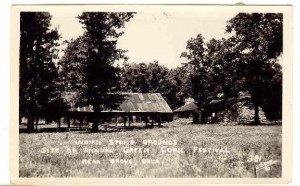 Seneca Cayuga Tribe
of Oklahoma
Seneca Cayuga Tribe
of Oklahoma
We are of the Hotinoshonni (People of the Longhouse) or also know as the Iroquois and or The Six Nations. We originally lived in and around the area today calledNew York; we also had villages throughout Pennsylvania, West Virginia, and Ohio. Through history not all of the Six Nations were relocated to Oklahoma. The Six Nations are starting from the east to west, Mohawk, Oneida, Onondaga, Cayuga, Seneca and the Tuscarora.
During the Revolutionary War the Iroquois were located between the British and the American people. The Iroquois tried to remain neutral in this war because it was between those two nations and did not concern them. As time went on and the battles came closer and closer to our villages, it became very difficult to remain neutral and still protect our homes and our people. The leaders of the Iroquois came together in council, (there are 51 Chiefs among the Iroquois and they made up the council) it was decided in this council that each nation was free to join the war as they saw fit. This broke the peace within the Iroquois because some of the Nations wanted to fight for the Americans and some for the British. During this time there were a good number of people who wished to remain neutral and these people began to move westward into to the lands now called Pennsylvania and Ohio. Our people often had temporary villages in these areas before for hunting, trapping and fishing. Now they would become homes more on a permanent basis. At the close of the war a treaty of Peace was worked out between the Americans and the British the land was divided and all through the talks the Iroquois people were left out of the treaty negotiations. This in turn left the Iroquois people with a lot less land than before the war; both the Americans and the British began to claim ownership of all the land, the process of making Treaties with the Indian Nations and creating smaller Reservations for them to reside on escalated.
Known collectively as Mingo or as Seneca, they are the ancestors of today’s Seneca-Cayuga Tribe of Oklahoma. In 1817 the United States established two reservations for the Ohio “Seneca.” One was for the Seneca of Sandusky, a mingling of Cayuga, Mohawk, Onondaga, Oneida, Erie, Conestoga, and others, along the Sandusky River, and the second was for a consolidated band of Seneca and Shawnee at Lewistown. Although there were members from all the Six Nations within in these two groups they were called the Seneca of Sandusky and the Seneca–Shawnees of Lewistown. By this time the Cayuga Nation had been divided into three different factions, one group going to the Six Nations reserve (Oshweken) on Canada’s side another stayed in New York to live among the Seneca within the Cattaraugus Reserve, and the third group moved to reservation areas in Ohio joining their relations along the Sandusky River.
In the 1831-32 the U.S. made treaties with the Seneca of Sandusky and the Seneca-Shawnee of Lewistown to give up their lands in Ohio and move west of the Mississippi river to Indian Territory or today called Oklahoma. Both groups exchanged their Ohio reserves for adjoining land in the Indian Territory in 1831. Approximately 358 Seneca of Sandusky reached the Cowskin (Elk) River in present Delaware County, Oklahoma, in summer 1832. About 258 members of the Mixed Band of Seneca and Shawnee arrived later that year. Following negotiations with the Stokes Commission in December 1832, the tribes readjusted their reservation boundaries and joined together as “the United Nation of Senecas and Shawnees.”
In 1838 A treaty was made at Buffalo Creek in New York, this treaty was to remove all the remaining New York Indians to lands west of the Mississippi River this included what was left of the Cayuga in New York. Although the Treaty was made, the effort to remove all Tribal Nations from within the state of New York failed. Only a small faction actually moved to the reservation set aside within the State of Kansas, known as the Reservation for New York Indians. Many of the hardships encountered paid it tolls on them some removing back to reservations in New York and the remaining went north to the Wyandotte in Kansas and south to the Seneca Agency in Indian Territory.
With the onset of the Civil War and despite the pro-Confederate stance of their leaders, most Seneca and Shawnee spent the Civil War years as refugees in Kansas among old friends and allies the Ottawa and Wyandotte Nations. At the close of the Civil War and the people returned to their own lands in Indian Territory to find their homes and farms in shambles and growing wild. In 1867 a treaty was made with the US government to separate the United Nation of Seneca and Shawnees, and reorganize into a single Seneca Tribe and the Shawnee became known as the Eastern Shawnee. Both surrendered lands that was divided to accommodate eight more tribes being moved to the area from Kansas.
During the 1870s and early 1880s the Seneca received newcomers, including Cayuga, Mohawk, and Seneca proper, from Canada and New York, and had a population of roughly 255 in 1890. The Seneca Reservation was first allotted to 130 individuals in 1888; by 1902 a total of 372 allotments had been issued. In 1937 the U.S. passed the Indian Reorganization Act, at this time the “Seneca” and Cayuga people had decided to combine all their annuities and reorganize under this act to become the federally recognized Seneca-Cayuga Tribe of Oklahoma.
The name “Seneca” had become the common name used to describe the Six Nation people relocated to the Indian Territory. The fact remains they are a mixed group of people, families from the original Six Nations (Mohawk, Oneida, Onondaga, Cayuga, Seneca and Tuscarora) including descendents of Erie, Conestoga, Tutelo and others adopted in from past wars, conflicts and intermarriages. Cayuga remains to be the more dominant lineage and identity including the language spoken within the Seneca-Cayuga Tribe in Indian territory.
THE SENECA LANGUAGE
 Seneca Vowels
Seneca Vowels| Character We Use: |
Sometimes Also Used: |
IPA symbol: | Seneca pronunciation: |
| a | a | Like the a in father. | |
| a: | a·, á, aa | a |
Like the a in father, only held longer. |
| ä | æ, ae | æ | Like the a in cat. |
| ä: | ä·, æ: | æ |
Like the a in cat, only held longer. |
| e | e | Like the e sound in Spanish, similar to the a in gate. | |
| e: | e·, é, ee | e |
Like the a in gate, only held longer. |
| i | i | Like the i in police. | |
| i: | i·, í, ii | i |
Like the i in police, only held longer. |
| o | u | o ~ u | Like the o in note or the u in flute. |
| o: | o·, ú, oo | o ~
u ~
u |
Like the o in note or the u in flute, only held longer. |
 Seneca Nasal Vowels
Seneca Nasal Vowels
| English (Français) | Seneca words |
| One (Un) | Ska:t |
| Two (Deux) | Tekhni:h |
| Three (Trois) | Sëh |
| Four (Quatre) | Ke:ih |
| Five (Cinq) | Wis |
| Man (Homme) | Hökwe |
| Woman (Femme) | Yakökwe |
| Dog (Chien) | Ji:yäh (loanword from French) |
| Sun (Soleil) | Kä:hkwa:' |
| Moon (Lune) | Ë:ní'ta:' |
| Water (Eau) | O:ne:ka' |
| White (Blanc) | Kakë:'ët |
| Yellow (Jaune) | Jitkwä:'ë:' |
| Red (Rouge) | Tkwëhtä:'ë:' |
| Black (Noir) | Jë:sta'ë:' |
| Northern Iroquois | Southern Iroquois | Extinct Iroquoian Languages | |||||||||
|---|---|---|---|---|---|---|---|---|---|---|---|
| English (Français) | Cayuga | Mohawk | Oneida | Onondaga | Seneca | Tuscarora | Cherokee | Laurentian | Nottoway | Susquehannock | Wyandot (Huron) |
| One (Un) | Sga:t | Enhskat | Úska | Sgá:dah | Ska:t | Ę:chi | Sagwu | Segada | Unte | Onskat | Skat |
| Two (Deux) | Dekni: | Tekeni | Tékeni | Dégnih | Tekhni:h | Né:kti: | Ta'li | Tigneny | Dekanee | Tiggene | Tindee |
| Three (Trois) | Ahsenh | Ahsen | Áhsv | Áhsęh | Sëh | Áhsę | Tso'i | Asche | Arsa | Axe | Shenk |
| Four (Quatre) | Gei: | Kayeri | Kayé: | Gayí:h | Ke:ih | Hę'tahk | Nvgi | Honnacon | Hentag | Raiene | Andauk |
| Five (Cinq) | Hwihs | Wisk | Wísk | Hwíks | Wis | Wísk | Hisgi | Ouyscon | Whisk | Wisck | Weeish |
| Man (Homme) | Ho:nhgweh | Ronkwe | Lukwé | Hę:gweh | Hökwe | Rę:kweh | Asgaya | Aguehan | Enihā | Itae'aetsin | Aingahon orOnnonhou |
| Woman (Femme) | Ago:nhgweh | Yakonkwe | Yakukwé | Gųnų:gweh | Yakökwe | Akę:kweh | Agehya | Aggouette | Ekening | Achonhaeffti | Utehke orOntehtian |
| Dog (Chien) | So:wa:s | Erhar | É:lhal | Jí:hah | Ji:yäh | Chír or Gís | Gihli | Aggayo | Cheer | Abgarijo | Agnienon orYunyeno |
| Sun (Soleil) | Ga:gwa:' | Karahkwa | Yotahala | Gáæhgwa:' | Kä:hkwa:' | Híhte' | Nvda | Isnay | Aheeta | Yaundeeshaw | |
| Moon (Lune) | Enhni'da:' | Ehnita | Ohní:ta' | Ęhní'da' | Ë:ní'ta:' | Í:ka'r | Nvda | Assomaha | Tethrāke | Yaundeeshaw | |
| Water(Eau) | Ohneganohs | Ohneka | Ohne:kánus | Ohnéganos | O:ne:ka' | À:we | Ama | Ame | Auwa | Oneega | Saundustee |
| White (Blanc) | Genh'ge:nh | Kenraken | Owískela' | Owæhé'sda' | Kakë:'ët | Uhwaryá:kę' | Unega | Owheryakum | |||
| Yellow (Jaune) | Oji:tgwa:' | Otsinekwar | Otsí:nkwala' | Ojí'tgwa:' | Jitkwä:'ë:' | Uchi'tkwáhneh | Dalonige | ||||
| Red (Rouge) | Otgwenhj'ia:' | Onekwenhtara | Onikwvhtala' | Otgwęhda:' | Tkwëhtä:'ë:' | Katkwarà:yę' | Gigage | Ganuntquare | |||
| Black (Noir) | Swenh'd'aenh | Kahòntsi | O'swv:ta' | Oshwę'da' | Jë:sta'ë:' | Kahęschi | Agvnige | Gehuntee | Che'estaheh | ||
| Eat (Manger) | I:ge:s | Raeks | Í:laks | Íheks | I:se:k | Rachù:rih | Agi'a | Untchore | Sischijro | ||
| See(Voir) | Ge:genh | Ratkahthos | La:kvhe' | Hagęha' | Hato:kha' | Ratkáhthuhs | Agowatiha | Waskehee | |||
| Hear (Entendre) | Hoto:nhde' | Rahronkas | Lothu:té: | Hathų:de' | Ha:ökha' | Rathęhna:ch | Atvgi'a | Thrahurta | |||
| Sing (Chanter) | Hore:nho:t | Raterennotha' | Tehalihwákhwa' | Hodę:nó:da' | Hatënotha' | Ra'nwę'è:ręh | Dekanogi'a | Thegnehoaca | |||
 ji:yäh |
 këötanëhkwih |
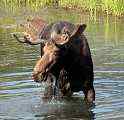 oyëtani' |
 neokë' |
 tha:yö:nih |
 nyakwai' |
 nö'kwatkwa:h |
 hë:es |
 jo'ä:ka' |
 kahe'ta' |
 kwa'yö:' |
 jinöhtaiö:' |
 ji'të'ö:h |
 jo:nyötah |
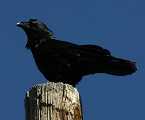 ka'ka:' |
 höka:k |
  anö:ya:enë' anö:ya:enë' |
 këjöh |
 ka'no:wa' |
 o'nöhkö:t |
Click here for pronunciation guide
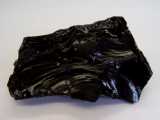  jë:sta'ë:' |
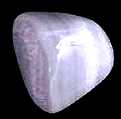 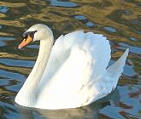 kakë:'ët |
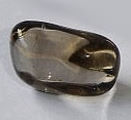 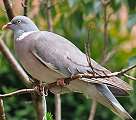 oyë'kwä:'ë:' |
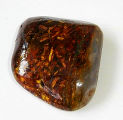  oiskwanyë'ta'ë:' |
 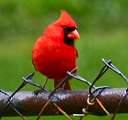 tkwëhtä:'ë:' |
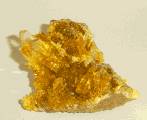 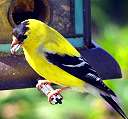 jitkwä:'ë:' |
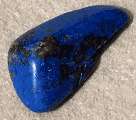  öya'ë:' |
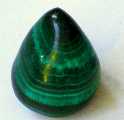 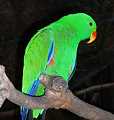 kanëhtaikhö' |
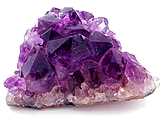 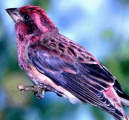 o'  eä'ë:' eä'ë:' |
Back to our Seneca homepage
Here are some themed Seneca word lists we have put together and illustrated for language learners. Feel free to print them out for classroom purposes!
 Seneca
animal words
Seneca
animal words  Seneca
color words
Seneca
color words SENECA SONGS
http://freemusicarchive.org/music/Seneca_Indians/
 In
1781, during the American Revolution, the Seneca Indians who sided with the
British, attacked Fort Klingensmith killing Philip, as well as about twenty-five
other settlers. Philip's sons Casper, 16, and John Peter, 8, were taken by the
Indians. Casper managed to escape and return home, but John Peter, due to his
young age, did not. John Peter was taken to an area of upstate New York where
he was raised by the Indians as an Iroqouis warrior. John Peter became
proficient at hunting, fishing, tracking and other native skills. John Peter
was eventually adopted into the Indian community, and for all intents and
purposes was totally Indian. John Peter was a member of the Oneida Nation, one
of the Six Nations of the Iroqouis Confederation loyal to the British. However,
during the American Revolution, it was the Oneida who broke the "covenant chain"
of the Iroqouis Confederation to bring much needed food to General George
Washington's troops at the very cold winter encampment at Valley Forge (the
Oneida are snubbed to this day by the rest of the Iroqouis for this deed).
In
1781, during the American Revolution, the Seneca Indians who sided with the
British, attacked Fort Klingensmith killing Philip, as well as about twenty-five
other settlers. Philip's sons Casper, 16, and John Peter, 8, were taken by the
Indians. Casper managed to escape and return home, but John Peter, due to his
young age, did not. John Peter was taken to an area of upstate New York where
he was raised by the Indians as an Iroqouis warrior. John Peter became
proficient at hunting, fishing, tracking and other native skills. John Peter
was eventually adopted into the Indian community, and for all intents and
purposes was totally Indian. John Peter was a member of the Oneida Nation, one
of the Six Nations of the Iroqouis Confederation loyal to the British. However,
during the American Revolution, it was the Oneida who broke the "covenant chain"
of the Iroqouis Confederation to bring much needed food to General George
Washington's troops at the very cold winter encampment at Valley Forge (the
Oneida are snubbed to this day by the rest of the Iroqouis for this deed).
This beaded skirt was made by Caroline Parker, a member of the Seneca Iroquois family headed by William Parker who acted as informants, consultants, interpreters, and friends to Lewis H. Morgan, who in the mid-nineteenth century brought together the first collections of ethnographic materials for what would become the New York State Museum. In 1849, Morgan acquired complete Seneca woman's and man's ceremonial costumes of the day, including this skirt. In the daguerreotype, Caroline Parker is shown wearing the woman's costume, consisting of beaded moccasins, leggings, skirt, overdress, blanket, and handbag, most if not all of which she herself had made.
The dress style has many similarities to that of the larger New York community during the 1840s, but the beadwork, in particular, distinguishes it as Native American. (A non-Indian woman, for instance, would have worn lace-trimmed pantalettes instead of bead-trimmed leggings.) Later in the century, beaded bags and non-utilitarian "whimsies" sold to tourists at places like Niagara Falls became an important source of income for Iroquois women helping to support their families.
By 1849, Caroline Parker at age 19 already was a highly skilled needlewoman. In his 1851 report to the Regents of the University, Morgan described a slightly more elaborate skirt by her as "without question the finest specimen of Indian beadwork ever exhibited," and went on to credit its maker by name, "to whose finished taste, and patient industry the State is indebted for most of the many beautiful specimens of beadwork embroidery now in the Indian collection."
In 1850, the New York state legislature passed a bill, introduced by Morgan, to support Indian students at the State Normal School (a teachers' college) in Albany. Caroline Parker and her younger brother Newton were among the first enrollees under this program.
[Photograph of Caroline Parker courtesy of the Rochester Museum and Science Center, Rochester, New York.]
Contributed by: Penelope B. Drooker, Curator of Anthropology
BRAVEHORSE WARRIOR Kaghswaghtaniunt Seneca Warrior 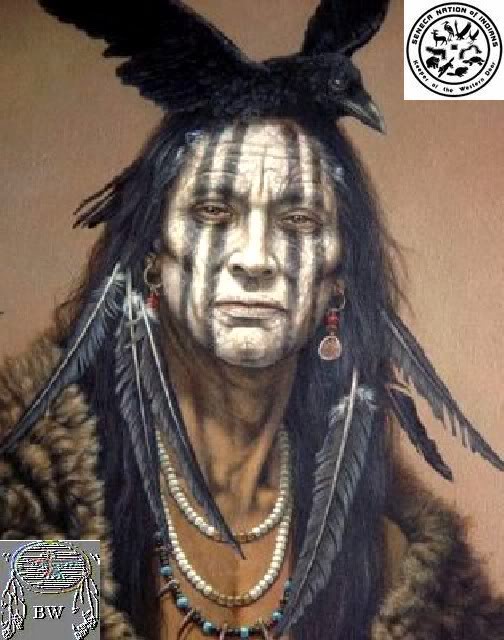
Chief Kaghswaghtaniunt Warrior Citation KAGHSWAGHTANIUNT (Coswentannea, Gaghswaghtaniunt, Kachshwuchdanionty, Tohaswuchdoniunty, Belt of Wampum, Old Belt, Le Collier Pendu, White Thunder), a Seneca Indian living on the upper Ohio River by 1750; d. c. 1762. As Cadsedan-hiunt he was identified in 1750 as one of the “Chiefs of the Seneca Nations settled at Ohio”; as Kachshwuchdanionty, he appeared in 1753 as one of “the Chiefs now entrusted with the Conduct of Publick affairs among the Six Nations” on the Ohio; and in 1755 he was described as “Belt of Wampum or White Thunder [who] keeps the wampum.” His English and French designations apparently attempt to translate his Seneca name; compare Zeisberger’s form, gaschwechtonni, of the Onondaga word meaning to make a belt of wampum. Kaghswaghtaniunt was closely associated with Tanaghrisson from 1749 to 1754, during the rising conflict between English and French over the Ohio country. In 1753 he was one of the delegations that confronted Paul Marin de La Malgue at Fort de la Rivière au Bœuf (Waterford, Pa.) with a protest against the French military advance toward the Ohio. Suffering some hurt, Kaghswaghtaniunt made the return trip to Logstown (Chiningué, now Ambridge, Pa.) by canoe, arriving in mid-January 1754. He was accompanied by Tanaghrisson and a French party under Michel Maray de La Chauvignerie. Soon afterward he was accused by an associate, Jeskakake, of conspiring to betray the French officer to the English. Kaghswaghtaniunt was among the 80 to 100 Mingos who later in 1754 joined Lieutenant-Colonel George Washington near present Uniontown, Pa., on his march toward Fort Duquesne (Pittsburgh, Pa.). With Washington’s defeat by Louis Coulon de Villiers, the group of Mingos took refuge at Aughwick (Shirleysburg, Pa.). Kaghswaghtaniunt was one of the Indians who joined Major-General Edward Braddock’s campaign against Fort Duquesne in 1755 and after the British defeat retired to the vicinity of Harris’s Ferry (Harrisburg, Pa.).After Tanaghrisson’s death in October 1754, Scarroyady had succeeded him as “half king” or spokesman for the Iroquois of the Ohio; but Scarroyady’s absences in New York left the leadership unsettled, and in January 1756 Kaghswaghtaniunt and another Seneca, the White Mingo, were reported to be at odds about the succession to Tanaghrisson. Later in 1756 the Mingo refugees moved from Pennsylvania to New York under the protection of Sir William Johnson, the superintendent of Indian affairs. In June of that year Johnson sent Kaghswaghtaniunt with a message to the Senecas, and advised him and his family to settle among them. The western (Geneseo) division of the tribe, encouraged by Louis-Thomas Chabert de Joncaire and his sons, had traditionally been favourable to the French, but Kaghswaghtaniunt continued to attend Johnson’s councils and in April 1759 announced to him the Geneseo decision (said to have been made the previous winter) to take the British side. He was one of the Seneca chiefs who conferred with Johnson at Oswego (Chouaguen) in August 1759 after the British capture of Fort Niagara (near Youngstown, N.Y.); a year later he headed a party that with 600 other Iroquois accompanied Major-General Jeffery Amherst’s army to Montreal, which fell on 8 Sept. 1760. In 1761 Donald Campbell a commandant of Detroit sent Johnson word of Seneca activity against the English in the west. When Kaghswaghtaniunt met Johnson at Niagara in August, however, he assured Johnson that “he was invested with the direction of the affairs of the nation where he lived” and that “all [was] well and very peaceable.” Kaghswaghtaniunt visited Fort Niagara again during the winter, and William Walters, the commandant, wrote of him on 5 April 1762: “He is a good old fellow & I always Receive him Kindly and give him a Little Ammunition & provision.” Not long after this, Kaghswaghtaniunt seems to have died. Not much is known of his family. His wife and three grown daughters were with him at a council in Philadelphia in April 1756, and also at Fort Johnson, New York, in November 1759. A stepson, Aroas or Silver Heels, prominent in his own right, appears in documents of 1755 and later. A reference to “the Old Belts Daughter” in June 1763 gives the impression that her father was then dead, and in subsequent documents the daughters are identified as Silvers Heels’ sisters. From: historical accounts & records http://adjunctprofessor.tripod.com/bravehorseswarriors/id182.html